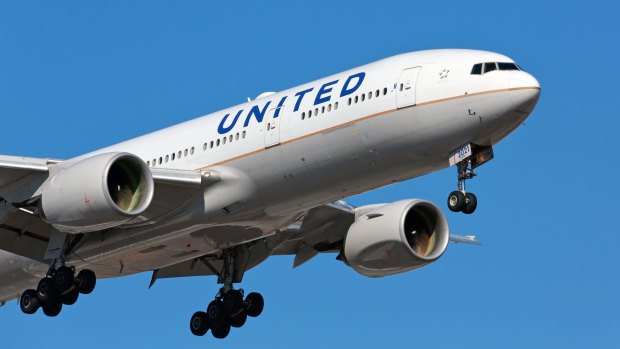By Michael Gebicki

In 2003, a United Airlines' Boeing 777 flew more than three hours on a single engine.Credit: iStock
In 2003, the crew of a United Airlines' Boeing 777 en route from Auckland to Los Angeles shut down an engine after an alert identified a problem with low oil and high temperature. Since the aircraft was more than halfway past the midpoint to Hawaii, the crew decided to divert and land there. Hawaii was within the aircraft's ETOPS (Extended-range Twin-engine Operational Performance Standards) rating of 180 minutes, the length of time an aircraft is certified to fly with just one of its two engines operating.
However headwinds prolonged the single-engine operation time to 192 minutes. The aircraft landed safely on one engine at Hawaii's Kona Airport, setting a new record for single-engine operation in emergency conditions.
At the same time, aircraft manufacturers were keen to increase the ETOPS rating of their twin-engine aircraft. An ETOPS rating of 180 minutes just wasn't going to cut it with airlines looking to fly long overwater routes with twin-engine aircraft, with the advantage of lower operating costs. Manufacturers needed to prove to aviation regulators that their twin-engine aircraft were capable of operating safely on one engine for much longer.
In October of 2003, a Boeing 777-300ER on a 13-hour test flight from Seattle to Taipei flew for over five hours on one engine. At the time the aircraft was undergoing trials for a revised ETOPS rating that would allow it to operate for 330 minutes on a single engine. After the crew shut down one of the two General Electric GE90-115B engines the aircraft continued to Taipei and landed safely. At the time Boeing was predicting the 777-300ER testing program would include some 220 hours of ETOPS flying.
Current title holder for the aircraft with the longest ETOPS rating is the Airbus 350-900, certified to fly for up to 370 minutes on one engine. That gives it a maximum diversion distance up to 2500 nautical miles, or 4630 kilometres. There are no scheduled airline flights that take an aircraft further than that from an airport that the aircraft could divert to in an emergency, and therefore the A350-900 can operate on any air route.
How far can an aircraft glide with no power?
Maybe 10 kilometres? Or 20? Or what about 121 kilometres? That's the distance an Airbus A330 travelled in 2001 after both its engines failed. The Air Transat aircraft was en route from Toronto's Pearson International Airport to Lisbon when the pilots received a warning of a fuel imbalance. Following procedure, they transferred fuel from the port wing tank to the starboard tank, but unbeknownst to them there was a leak in a fractured fuel line on that side.
With the fuel supply depleting rapidly the crew initiated a diversion to Lajes Air Base in the Azores but as the aircraft descended both engines died as the fuel ran out. The ram air turbine, a small airstream-driven turbine, provided sufficient power for the pilots to control the aircraft's heading as well as powering critical sensors and flight instruments. The aircraft was descending at around 600 metres per minute and a sea ditching was flagged as a possibility when the crew sighted the air base at Lajes.
In darkness the captain flew the aircraft in a 360° turn followed by a series of swooping left-right turns to scrub altitude before the aircraft landed at 200 knots, about 60 knots above standard. With maximum emergency braking applied the captain brought the aircraft to a halt. The crew were hailed as heroes, and their feat went down in aviation history as the longest ever glide by a commercial twin jet aircraft.
What happens to the aircraft when an engine dies?
The aircraft becomes unstable. Powered by a single engine, thrust is delivered from one side instead of two, and that thrust must now be increased to maintain airspeed. Under that condition the aircraft will yaw, move sideways into a turn in the direction of the dead engine, which must be corrected with the rudder. Also, with less power available, the aircraft will no longer be able to fly at cruise altitude. The aircraft will descend to the One Engine Inoperative ceiling, an altitude that it can maintain, most likely in the 20,000-25,000 foot range.
That's what happened to Qantas flight QF144, which suffered an engine failure en route from Auckland to Sydney on January 18, 2023. The aircraft descended from its cruise altitude of 36,000 feet to 20,000 feet, but apart from a jolt when it happened, passengers were unaware of the gravity of the situation. Flaps must be configured differently for a single engine landing, resulting in an increase in the distance required to bring the aircraft to a complete stop, and that could mean a change of airport.
How common is engine failure on a twin-engine jet aircraft?
Very uncommon, virtually a one-in-a-million event. That's about the number of flights you'd have to take to experience an engine failure on a twin-engine aircraft. That puts it at about 25 such events occurring right across the commercial aviation industry per year. It's so rare that the most likely place a pilot will experience an engine failure is at the controls of a flight simulator, and that's one of the training procedures a pilot will regularly undergo.
Sign up for the Traveller newsletter
The latest travel news, tips and inspiration delivered to your inbox. Sign up now.